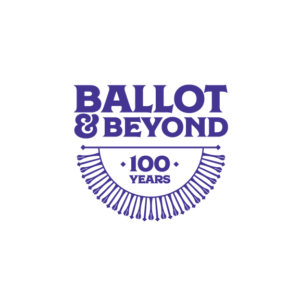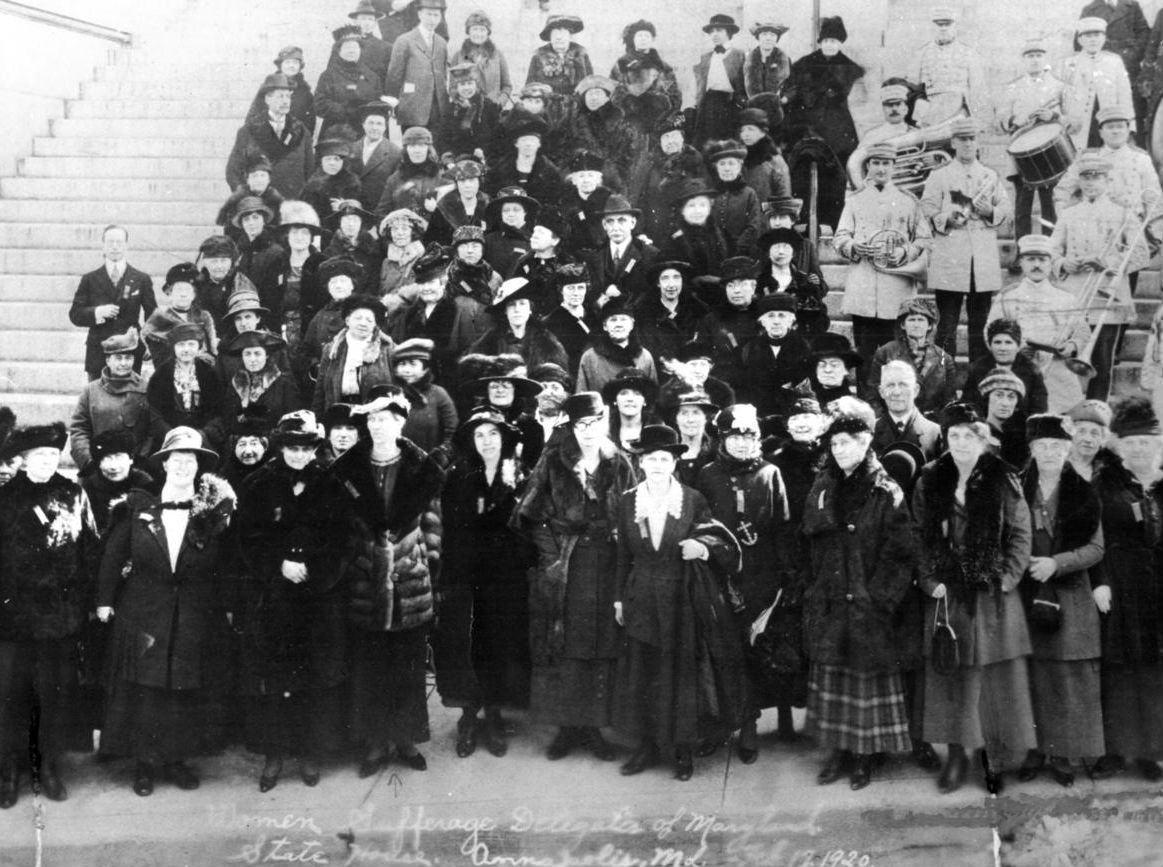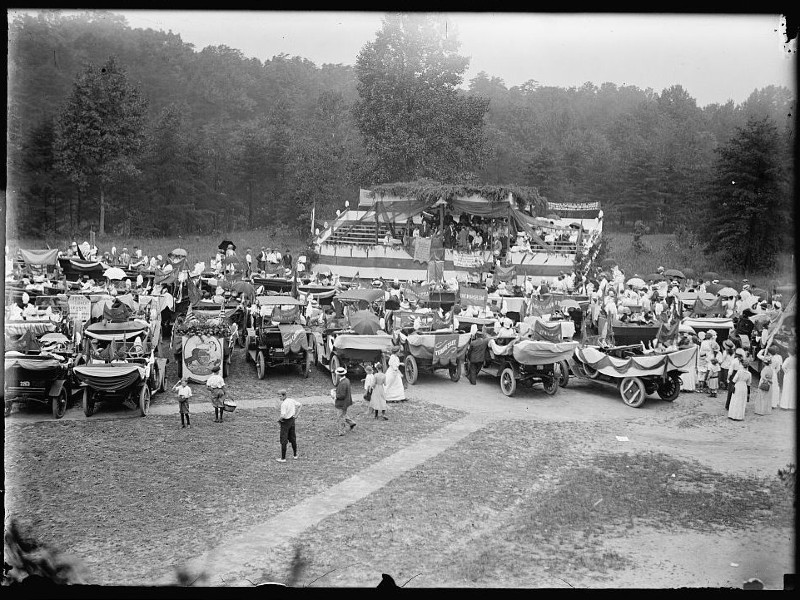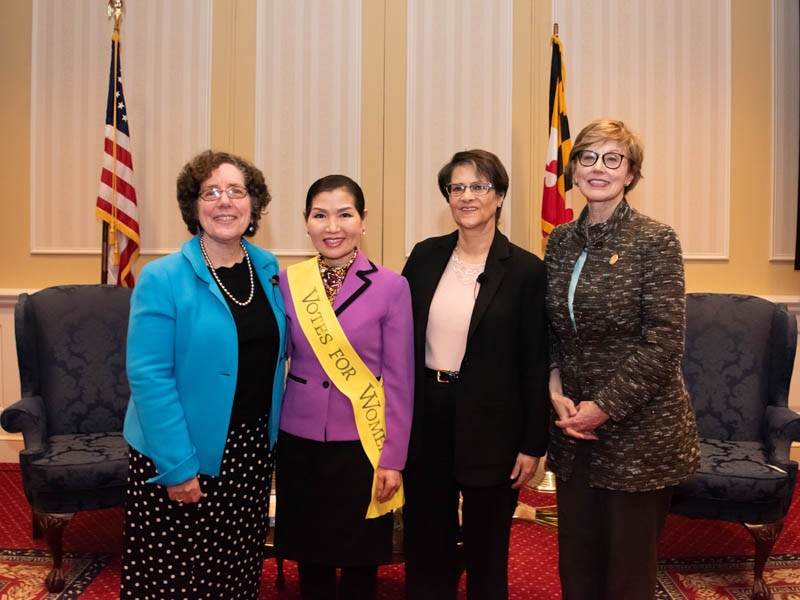To commemorate the 100th Anniversary of the ratification of the 19th Amendment, Preservation Maryland is using our 21th-century tools and an inclusive historic approach to elevate the complex history of Maryland’s suffragists and their lasting legacy on equality in the United States. The Ballot & Beyond project is powered by Preservation Maryland’s Six-to-Fix program with additional support by Gallagher, Evelius & Jones.

Ballot and Beyond Logo
Ballot & Beyond: Biographical sketches and historic images of over two dozen remarkable Maryland women are now streaming for free on Ballot & Beyond. You’ll learn about many Maryland women of note including suffragists, legislators, judges, philanthropists, and more.
Maryland’s story in the fight for women’s suffrage was far from perfect. In fact, Maryland was not one of the original 36 states to ratify the 19th Amendment which made it part of the US Constitution in 1920. Maryland waited until 1941 and did not certify that vote until 1958. Those facts do not in any way diminish the work of Maryland’s suffragists, instead, it makes their efforts and sacrifices that much more heroic in the face of strong opposition.

Maryland’s Suffragists in Annapolis, 1920.
Through statewide research conducted by Kacy Rohn, as an intern at the Maryland Historical Trust and supported with a grant written by Preservation Maryland for the NPS Underrepsetned Communities Grants, Maryland is one of few states that has a wide-ranging historical context of the suffrage movement. Due to Maryland’s proximity to the Capital, our suffragists often hosted rallies before heading south to the White House, protested at the State House in Annapolis, and even hosted Susan B. Anthony for her last public speech at Baltimore’s Lyric Theatre. And even before national momentum took hold for a suffrage movement, Margaret Brent asked the then-unthinkable in the 1600s and several women voted in municipal elections in Still Pond, Maryland on the Eastern Shore in 1908 due to a progress town charter.

Caravan of suffragists rally in Hyattsville, Maryland before traveling to Washington, DC. Image from Library of Congress.
The women’s suffrage movement was largely racially segregated. To ensure their voices were heard, Maryland’s African American citizen activists organized parallel organizations and rallies, and if and when those groups did come together, like at large marches in Washington, DC, the African American women were forced to walk at the back of the procession. Even after ratification of the 19th Amendment Black women votes were suppressed and thus early African American suffragists did not end their crusade and in fact, provided incredibly important resources to newly-enfranchised voters and held citizenship training workshops. Black suffragists have an enduring legacy on civil rights activism well into the future.
Preservation Maryland’s approach to telling the story of the real and complex story of women’s suffragists strives to provide the historical context to the movement that took generations and was entangled in other social issues including abolition, temperance, racial equality.
To ensure that the story and legacy of Maryland’s suffragists remain in our historical mind’s eye well beyond this year’s anniversary celebrations, Preservation Maryland received support from Gallagher Evelius & Jones, to create a multimedia public history project, called Ballot & Beyond. The project includes biographical sketches of Maryland’s most remarkable women leaders brought to life with historical images and audio – all available for free listening and sharing online.

Maryland’s First Lady, Yumi Hogan, with historians Elaine Weiss and Dr. Martha Jones, at a special event moderated by Sheila Kast of WYPR, January 2020.
Preservation Maryland has been engaged in the preparation of the 100th Anniversary of the 19th Amendment since the organization announced Women’s Suffrage History as a major Six-to-Fix program initiative in 2017. Since then, the organization has developed the Ballot & Beyond project, hosted a Women’s Suffrage lecture series, produced two traveling exhibits, and participated in many federal and state planning initiatives.
SUPPORT OUR PUBLIC HISTORY WORK
The basis for so much of Maryland’s suffrage history is a historical context statement conducted by Kacy Rohn, as an intern at the Maryland Historical Trust. Preservation Maryland is proud to have supported the creation of that document and heralds it as an amazing public resource for learning from the Suffrage movement.

